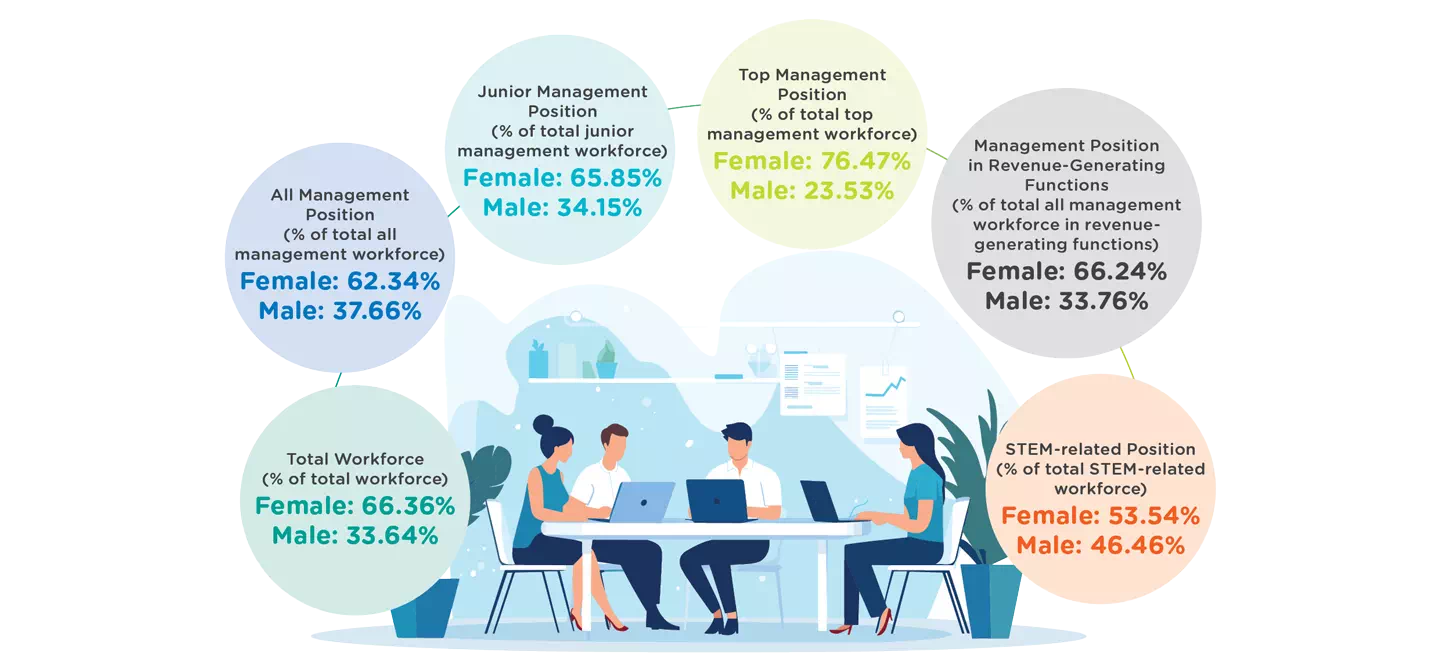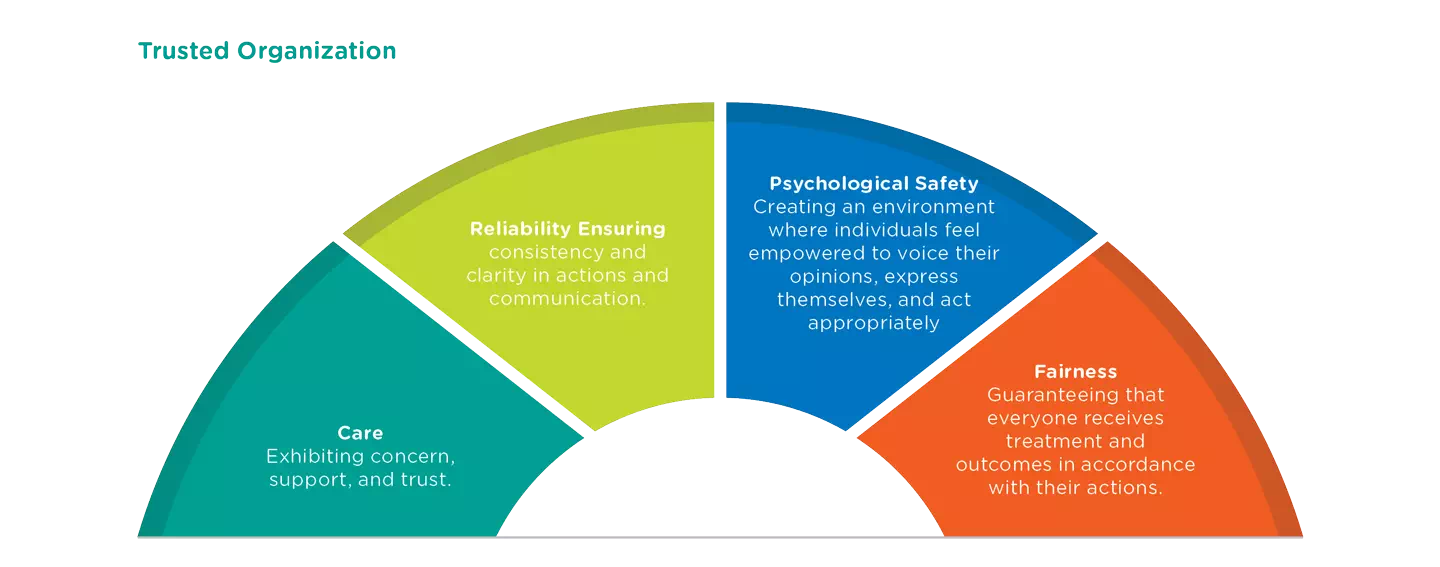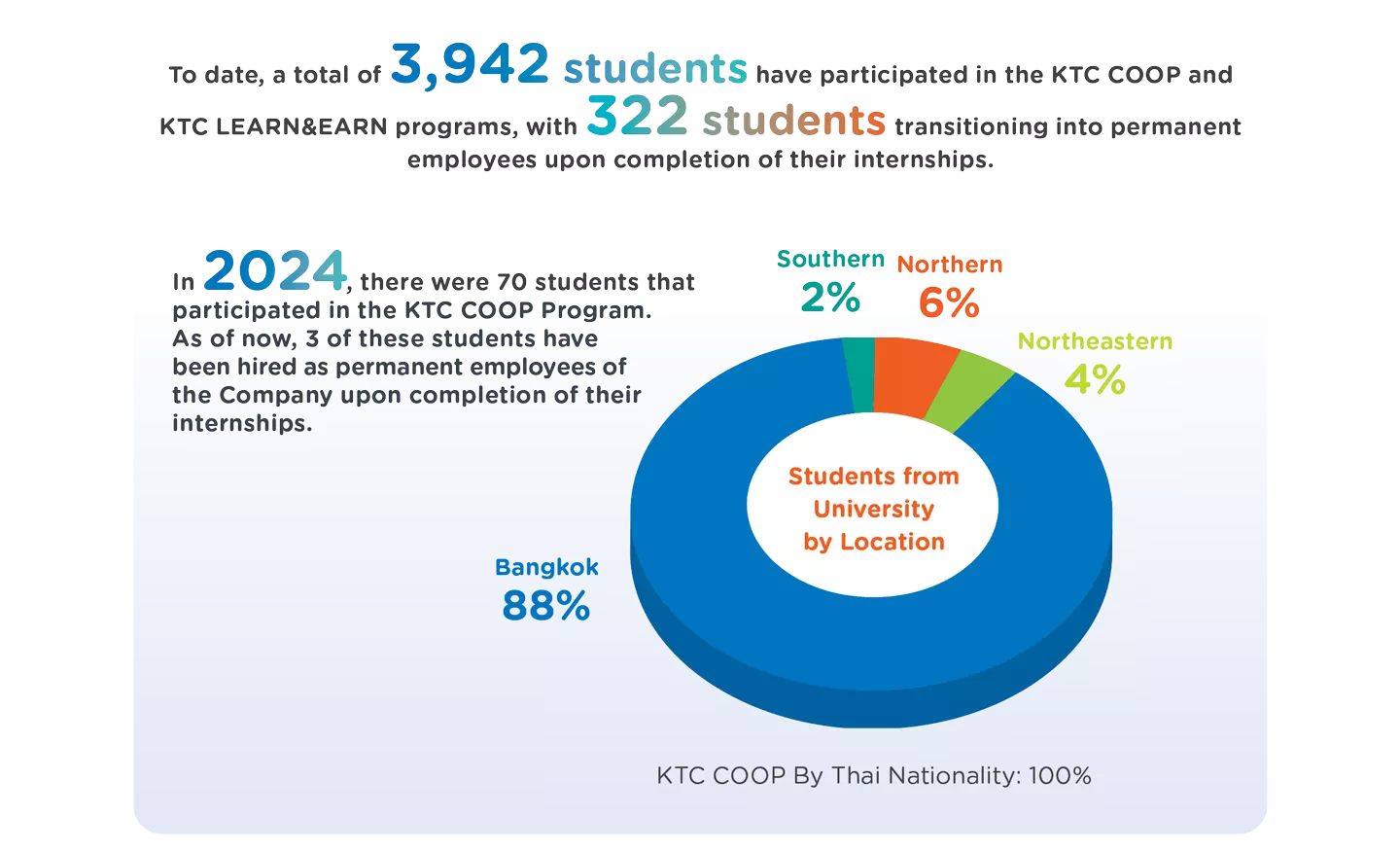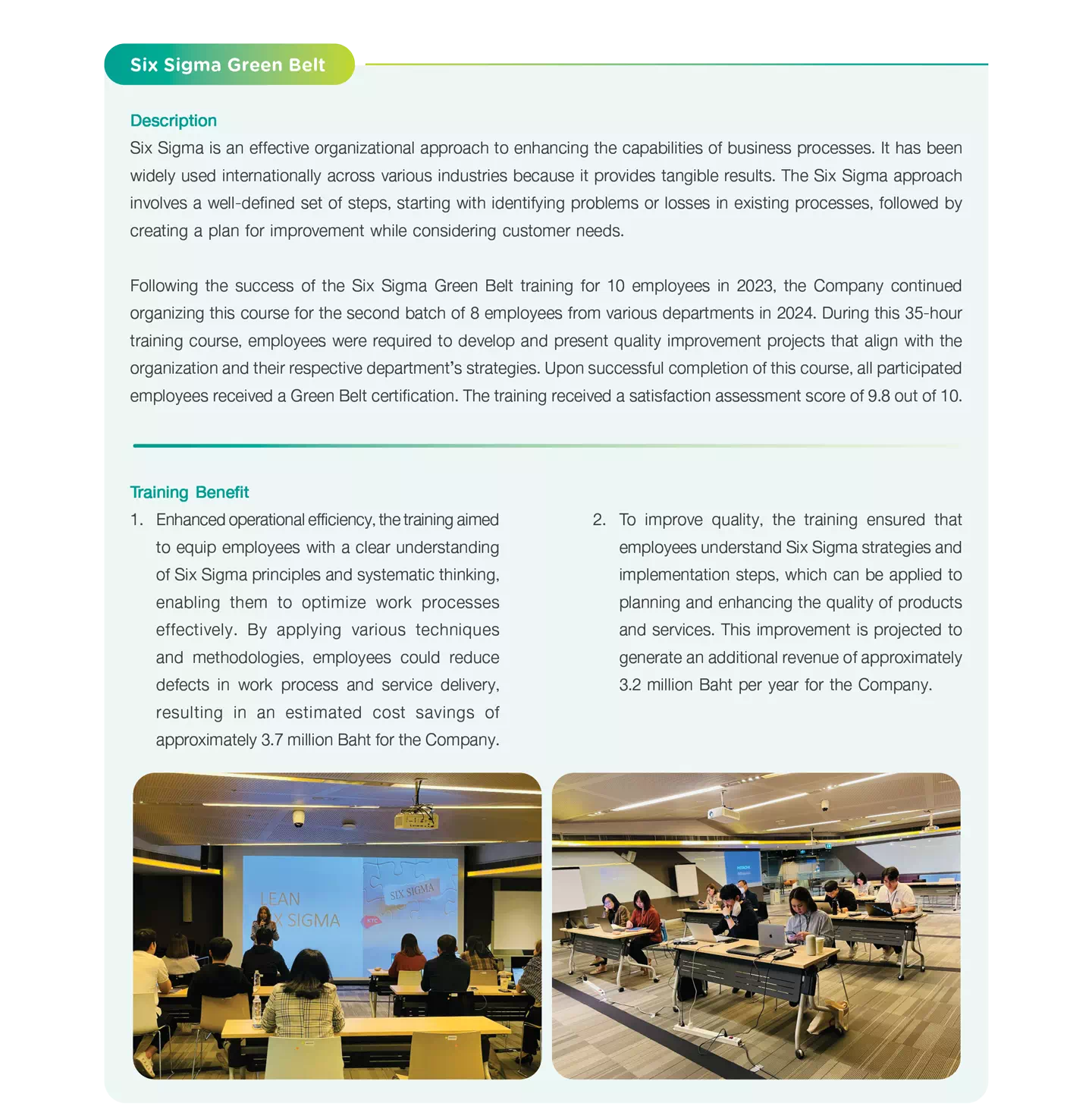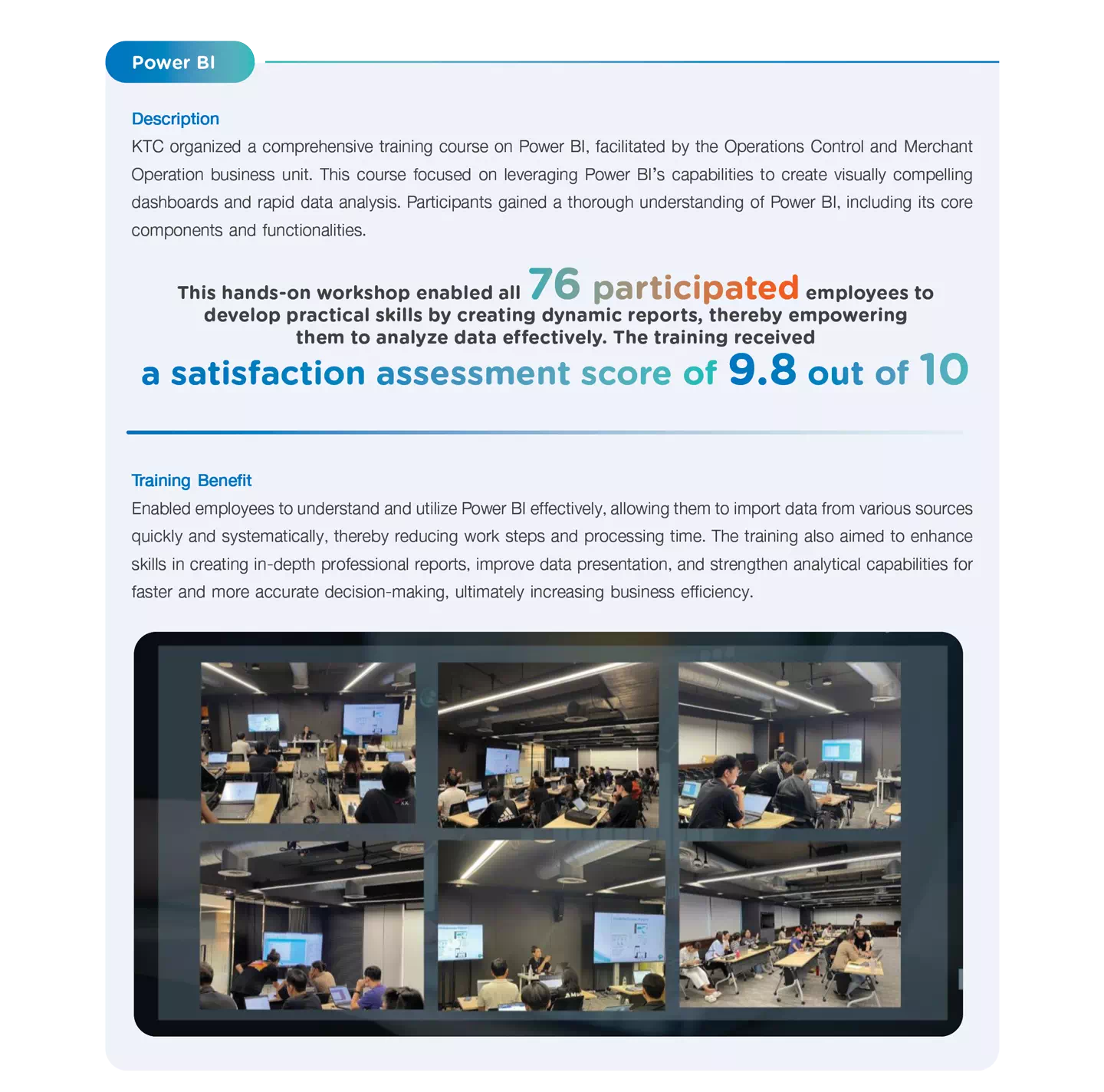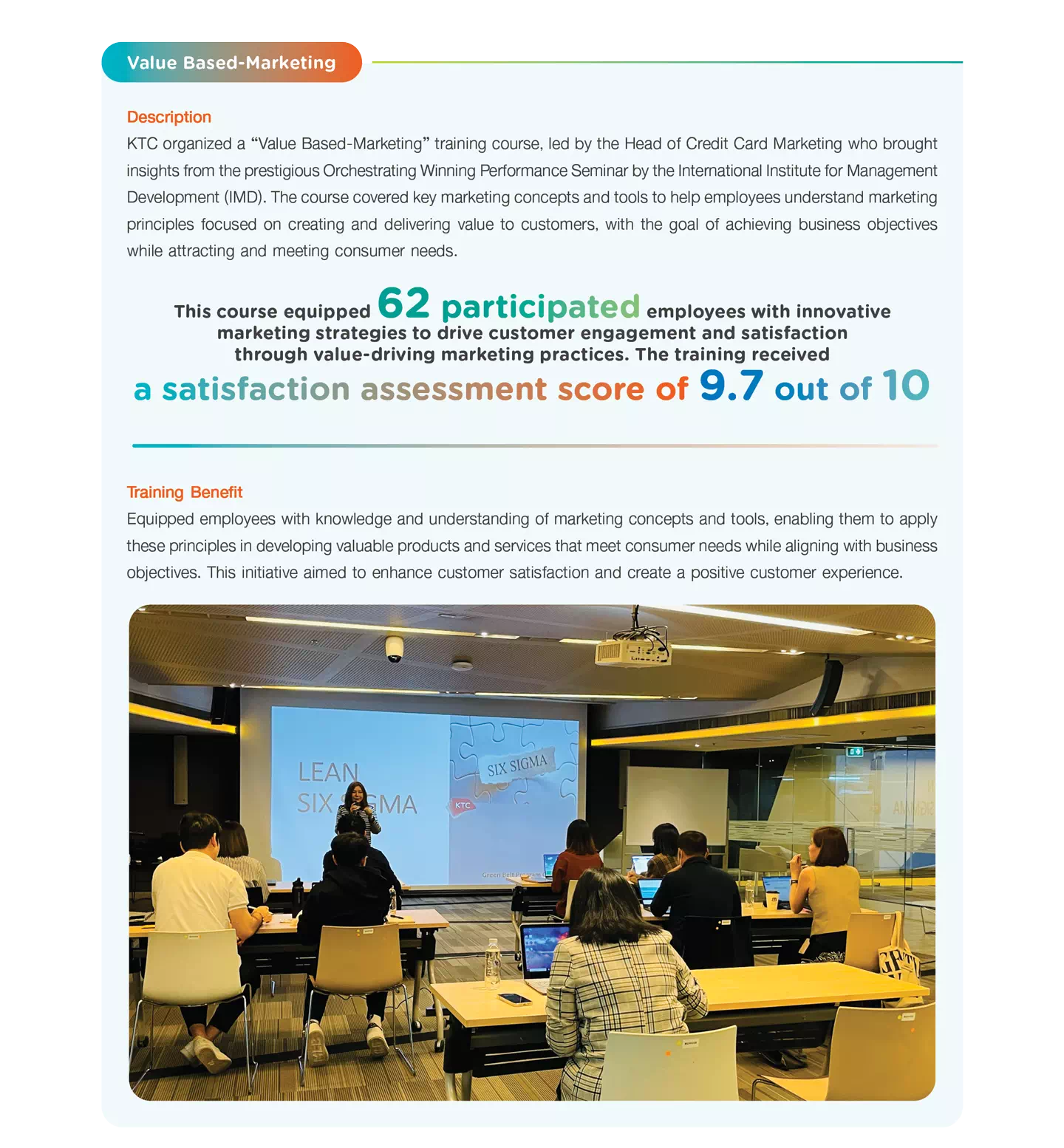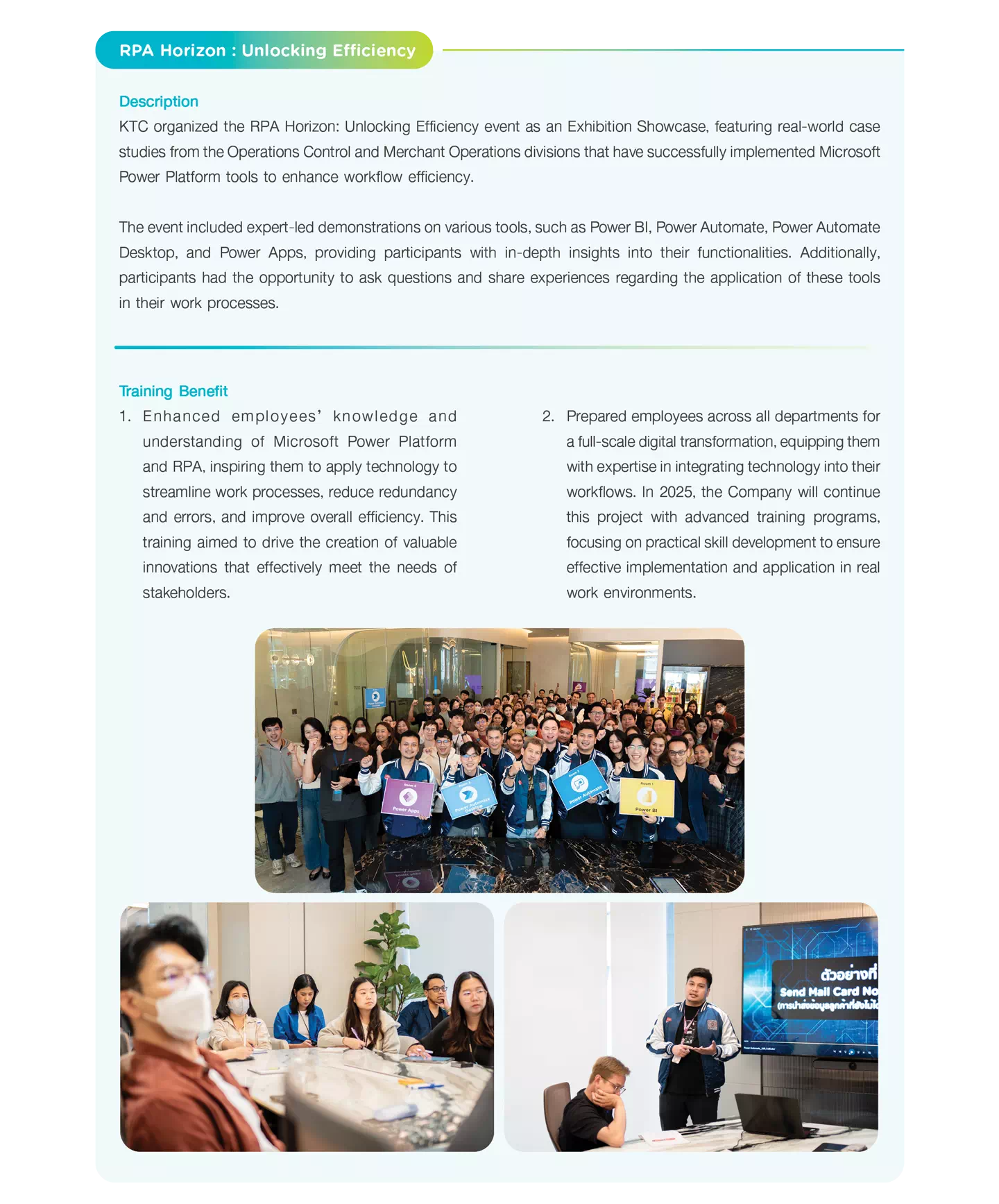Succession Planning
The Company emphasizes the critical importance of personnel development and robust
succession planning for key organizational roles to ensure business continuity and
long-term operational efficiency. The Company has prepared for two main aspects
including, identifying individuals to replace or assume top management roles (Key
Position) and crucial positions that impact the organization’s business operations
(Critical Position). This preparation aims to ensure readiness for transitions,
mitigate the risks associated with the loss of key personnel, and support the
development of employees’ potential, ensuring they are equipped for important roles
in the future. The top management will select candidate successors based on criteria
that evaluate the employees’ potential and readiness, past performances, leadership,
and adaptability. An Individual Development Plan is subsequently crafted for each
selected successor, tailored to enhance the competencies required for their targeted
roles. This Individual Development Plan consists of on-the-job training, special
assignments, and coaching & feedback.
CEO Succession Planning
The Company has established a CEO succession plan, assigning the
Nomination and Remuneration Committee to prepare a succession plan for executive
positions in anticipation of the retirement or incapacity of such executives so that
the Company's management may continuously operating. In addition, the Board
determines the criteria for recruitment of Chief Executive Officer to which the
Nomination and Remuneration Committee refers for recruitment of CEO candidates, when
the office is vacated, before presenting a list of CEO candidates to the Board for
deliberation. These candidates must be a qualified person who possesses management
knowledge, skills and experience in credit card business or the finance or banking
sector or financial institutions or other businesses related to the credit card
business, and they must have an overarching vision and management philosophy suited
for the Company’s businesses.
Remarks:
Executive means chief executive officer, a person holding a
position in the first four management levels below chief executive officer, a person
holding a position comparable to a person holding a position in the fourth
management level,1 including a person holding a department manager position or above
in the accounting or finance management function.
1 Every manager who is a direct report to chief executive officer as
shown in the organizational structure of the Company.
Employee Remuneration
The Company remains committed to its remuneration management policy, emphasizing
fair and impartial compensation for employees. This approach considers factors such
as experience, competency, equity, and non-discrimination, ensuring alignment with
performance benchmarks and market competitiveness. Oversight of this policy, along
with regular reviews of employee compensation and benefits, is managed by the Human
Resources business unit. Employee benefits encompass the Workmen’s Compensation
Fund, the Social Security Fund, and the post-employment-benefits, which are all in
compliance with the Labor Protection Act. Additionally, the Company conducts an
annual industry survey on remuneration and benefits through collaboration with a
respected human resource consulting firm. The findings from this survey guide
updates to the Company’s compensation structure, ensuring relevance and
competitiveness in the market.
KTC offers flexible provident fund arrangements where employees can select their
preferred rates and the Company will contribute corresponding amount in accordance
with related policies. The amount that the Company contributes to provident fund
will increase following the employee’s tenure. Provision of provident funding for
employees allows financial security and ensures savings for retirement plans.



 Promotions
Promotions
 KTC WORLD
KTC WORLD KTC U SHOP
KTC U SHOP




 Login
Login






